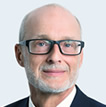Personal Finance
The ticker symbol has been synonymous with North American stock markets over time. But have you ever wondered where the term “ticker symbol” comes from?
The origin of the ticker symbol dates back to the end of the 1800s when Thomas Edison developed one of the first means of digital electronic communication — the stock ticker — a machine which broadcast the price of stocks over telegraph lines. It consisted of a long paper strip that ran through the machine which printed company names and their associated stock transaction price and volume information.
The word “ticker” was derived from the tapping noise the machine made while printing. At the time, it was difficult to list the entire name of a company, so an abbreviated form called a “ticker symbol” was used.
In the 1960s, the paper ticker tape and stock ticker become obsolete. At this time, the rise in the use of new technology such as television and computers replaced the ticker tape to transmit financial information.
Today, letter-only ticker symbols have been standardized across North American markets. When a security is listed on public markets, a company has the opportunity of choosing their ticker symbol. There are generally few rules that limit its ticker symbol name, as long as the main part of the symbol is four letters or less, is unique, does not closely resemble another symbol and is not rude in nature.
Some of the more unique ticker symbols include: LUV — a low-cost U.S. airline, headquartered in Love Field, USA; FUN — a U.S. amusement park operator; YUM — a global operator of fastfood restaurant chains; and TAP — a U.S. beer-producer.
I am careful to contemplate that at Halloween, the notion of trick or treat may be going through your minds as you read this article. If you have been watching the news lately and especially the performance of our Prime Minister and his government, his carbon tax strategy truly is a “Trick” (it is not a tax on carbon, it is a price on pollution) and his “Treat” is to take your money, then give it back to you as a rebate.
We have a government that is oblivious to what matters most to the average Canadian. They believe the three main concerns to all Canadians are:
- Carbon Tax
- Gender neutrality
- Aboriginal rights
These are valid concerns and issues that need to be explored and addressed respectfully but I feel the three top concerns for Canadians are:
- The Economy
- Healthcare
- Taxes
A recent study by the Fraser Institute in Ontario, that government sector employees earn 10.6% more than private sector employees for similar work.[1] They retire 1.8 years before private sector employees, take 5 more personal days off work a year, 5 times less likely to be laid off, and 7 times more likely to have guaranteed pensions for life.
My question to you is this, if public sector employees made less, and more importantly, had no guaranteed pensions, do you think that they who drive policy would not push for better taxation policies that allows capital formation for retirement? Of course they would, but as we say in the private equity world, senior bureaucrats have “no skin in the game or investor alignment” so they will continue to increase taxes to guarantee government revenues for their gold-plated pensions. Case in point, the government just released its 2017 / 2018 fall annual financial report that states it increased revenue by a whopping $20 billion over targets thanks largely to half of that money coming from additional revenues through income tax.[2]
TriView Capital, an Exempt Market Dealer registered in Western Canada and Ontario, will be conducting education seminars across Western Canada starting November 8th in Vancouver, November 13th in Victoria and November 14th & 15th in Calgary. They will show you two investment strategies that help support more than a million private sector jobs (economy), new drugs and patents to help reduce costs and improve patient lives (healthcare), and use federal and provincial tax deductions / credits to maximize your tax savings this season (taxes). Seating is limited. Please go to www.triviewcapital.com/events/ to register for these upcoming education seminars that will reinforce the idea that “it’s not how much you make but how much you keep”.
Craig Burrows
President & CEO, Tri View Capital Ltd.
[1] https://www.fraserinstitute.org/studies/comparing-government-and-private-sector-compensation-in-ontario-2018
2 https://nationalpost.com/news/politics/john-ivison-federal-liberals-stumbled-into-a-20b-windfall-then-they-spent-it-all
Disclaimer: This communication is for information purposes only and is not, and under no circumstances to be construed as an invitation to make an investment in any securities, nor does it constitute a public offering to sell securities or any other products described herein.
“Everyone wants happiness. No one wants pain. But you can’t have a rainbow, without a little rain.” ― Anonymous
Global stock markets are in the midst of a pullback and corrections never feel good. In the short-term, investor sentiment can swing wildly, causing volatility in the markets. Psychology is an important part of investing and we can often be our own worst enemy in making sub-optimal decisions in times of volatility. This is due to the natural wiring in our brains, where fear triggers a flight instinct. Our brains also have a tendency to project recent trends into the future (recency bias), which collectively, can cause crowd sentiment to hit extremes. For long-term investors, empirical data and experience have shown that times of pessimism often present opportunities.
The current market pullback was triggered over fears of a prolonged trade war between the U.S. and China (tariffs), rising bond yields (tighter financial conditions), faster U.S. interest rate hikes (hawkish U.S. Federal Reserve) and so on. These factors can lead to slower global economic growth over time. As sentiment soured, selling in highly crowded trades, such as the FAANG (Facebook, Apple, Amazon, Netflix and Alphabet’s Google) stocks added fuel to the fire.
As of writing, North American markets are off 8-10% from their summer peaks and international developed markets (ex-Canada & U.S.) are off about 18% from their peaks. Markets are attempting to put together a short-term bounce, but the bounce has been weak thus far. This leads us to think that this pullback could go lower for longer. Some markets (such as S&P500, TSX, Japan) are trading at or near first support levels now, but if those supports are violated, markets could go lower from current levels.
The reason why your portfolios hold different asset classes is to provide negative correlation and it is during these times of stress that bonds and gold shine and the cash reserve provides dry powder to capture opportunities.
Longer term, stock valuation is mainly driven by corporate earnings and dividends. The earnings season is underway, and thus far, we are seeing strong corporate earnings (second best quarter in a decade). Companies in both the S&P 500 andTSX Composite are showing positive revenue growth (top line) and earnings growth (bottom line). Furthermore, corporate stock buyback programs are set to restart this quarter and are expected to provide support for the markets. Overall, economic data and indicators, such as consumer spending and business investments, suggest that this is still a healthy market pullback in the context of a late-cycle, bull market. We expect to see rotation into value and defensive sectors like health care and consumer staples as the cycle continues. The key to sound investing is to remain focused on the long-term horizon as short-term market volatility is inevitable and is part of investing.
Want to know about McIver Capital Management at Canaccord Genuity? Click here
I had the pleasure of attending the Business Transitions Forum last year. It was an incredibly valuable day for me as a business executive and entrepreneur. I can highly recommend the event.
Grant Longhurst, President – High Performance Communications Inc. and MoneyTalks
The Business Transitions Forum is a multi-city conference held in Calgary, Edmonton, Vancouver, Toronto and Halifax. It is for business owners that wish to learn how to plan for the most monumental decision in your company’s lifecycle – the eventual transition of your business. Learn from experts and connect with peer groups who will offer valuable insights to help with your transition strategy. Whether you want to grow, sell or buy, the Business Transitions Forum will give you the tools to enhance the value of your business.
Next Up – Vancouver:
- Date: November 7 – 8, 2018
- Time: 8:00 AM – 5:00 PM
- Location: The Westin Bayshore
Register here using the promo code HighPCI30 to receive 30% off your full conference tickets!
Questions? Reach out to the BTF team at info@businesstransitionsforum.com.
Take a moment and read the advice of someone who many experts consider the most savy investor on Wall Street. ~MC
‘Mastering the Market Cycle’ Review: The Dangers of Optimism
In 2011 Mr. Marks published “The Most Important Thing,” which comprised 20 investment insights culled from these memos. In “Mastering the Market Cycle,” he focuses on what he regards as one of his most important insights: “If we study past cycles, understand their origins and import, and keep alert for the next one, . . . we can master these recurring patterns for our betterment.”
It is not surprising that Mr. Marks considers mastering the market cycle so important. While most investors avoid market timing, it is in fact timing that has accounted for Mr. Marks’s success. During the 2007-09 market meltdown, he had the foresight to set up an $11 billion distressed-debt fund—aimed at buying the financial instruments of companies near or currently in bankruptcy. It was the largest such fund in history. Following the collapse of Lehman Brothers in September 2008, he began putting the money to work. According to Bloomberg, his distressed-debt funds returned 19% per annum after fees, a record that far outdistanced his peers.
Looking back on this period in a podcast, Mr. Marks described his thinking in this way: “All you had to do to make money in the crisis was have money to spend and the nerve to spend it. You didn’t need caution, conservatism, risk control, patience, selectivity, discipline, any of those things. All you needed was money and nerve. But not all the time, because sometimes money and nerve will get you killed. One of the keys to investing is to know which is which.”
Mr. Marks acknowledges that there are no real cycles in the market, and he has no illusions that he can make macroeconomic forecasts. He admits that he can never call market tops and bottoms or predict how far prices will fluctuate. But he believes that he can understand fluctuations in investors’ attitudes toward risk. Price declines tend to increase risk aversion and send investors to the sidelines just as prices (and actual risk) are at their lowest. The opposite effects can be seen when prices rise. “The greatest source of investment risk” is not, he writes, “negative economic developments” but “when risk aversion and caution evaporate.”
“Mastering the Market Cycle” comes down to the insights of behavioral finance. We know that investors tend to put money into the market at tops, when everyone is optimistic, and take the money out at bottoms, when panic is widespread. The key to investment success is to do the opposite and keep one’s emotions—aggressiveness and defensiveness—in balance. Mr. Marks’s recipe for success is much like that of Mr. Buffett, who has said that investors should be “fearful when others are greedy and greedy when others are fearful.”
In his longest chapter, Mr. Marks explains how he was able to profit from the events leading up to the 2008 market meltdown. His analysis closely parallels the theories of the late economist Hyman Minsky. Good times lead to overly optimistic forecasts and a loosening of credit standards. Excessive debt leads to a wave of defaults at the first signs of economic turmoil and ultimately to a market meltdown. The Minsky theory is that stability itself breeds behavior that leads to instability. As he put it: “The longer things are stable, the more unstable they will be when the crisis hits.”
Mr. Marks shows how good times from 2005 to 2008 caused investors to become so optimistic that they jettisoned caution and settled for skimpy premiums on risky investments. “The greatest source of investment risk,” he says, “is the belief that there is no risk.” When prices start to decline, investors panic and risk aversion goes from inadequate to excessive. Thus the reward for bearing risk is greatest just when people refuse to bear it. “The fluctuation—or inconstancy—in attitudes toward risk,” Mr. Marks writes, is “the cause or exacerbator” of cycles. At the bottom of the market lenders refuse to offer credit even to credit-worthy borrowers.
The volatility in the credit markets is equally evident in the real-estate and stock markets. The dot-com bubble of the late 1990s, when high-tech stocks sold at unprecedented triple-digit earnings multiples, and the real-estate bubble of the early 2000s bear witness to similar patterns of euphoria and depression.
“Mastering the Market Cycle” is not a perfect book. It is overlong and tends to be repetitious. But it is wise. A careful reading can make us better investors and protect us from the all too frequent errors that ruin investment results. I do worry, however, that the book may encourage some readers to engage in market timing. Few investors have the insight and ability of Howard Marks, who has been unusually skilled in his analysis of where we are in the market “cycle.” For many investors the takeaway should be: “Don’t try this at home.” Fortunately, Mr. Marks has included a chapter titled “Limits on Coping,” which says that, however important it may be to understand the market cycle, “it’s essential that you also understand the limitations, as well as the skills that are required and how difficult it is.”
Perhaps the smartest thing an ordinary investor can do is to engage in periodic rebalancing of a diversified portfolio. If one asset becomes so richly valued that it comes to represent a disproportionately large share of the portfolio, then reduce its weighting and place the proceeds in underweighted assets. Such rebalancing may not be “mastery” in the fullest sense, but it will generally reduce risk and often enhance a portfolio’s return.


















